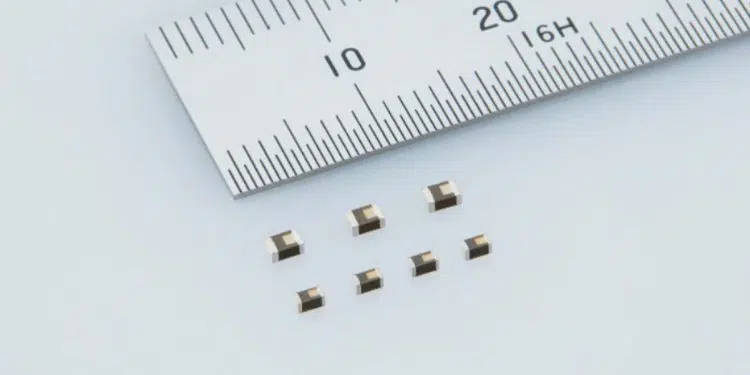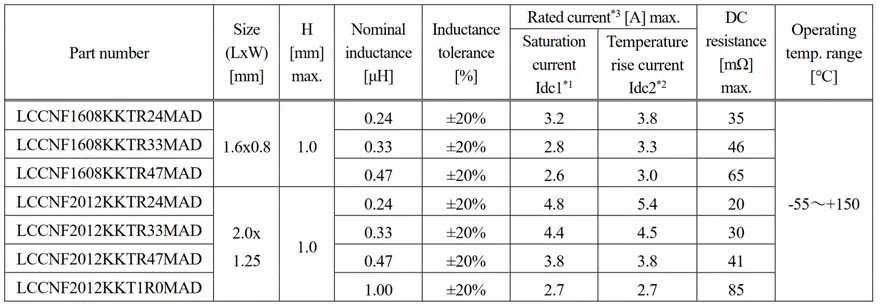TAIYO YUDEN releases automotive 150°C multilayer metal power inductor featuring an industry-leading compact size and large current with low DC resistance.
TAIYO YUDEN CO. LTD. has announced the addition of seven items in two sizes to the AEC-Q200 (reliability qualification test standard for automotive passive components) qualified multilayer metal power inductor MCOIL™ LCCN series, including the LCCNF1608KKTR24MAD (1.6×0.8×1.0 mm, height is the maximum value).
This power inductor product is designed for use as a choke coil in power supply circuits for automotive body and information systems. The product has a wider operating temperature range of -55 to +150°C than our existing product, the LCCNF1608KKTR24MA (-40 to +125°C). The LCCNF1608KKTR24MAD
simultaneously features industry-leading DC superposition characteristics (saturation current at 3.2 A) and low DC resistance (35 mΩ) (both are the maximum values), while maintaining the compact size of the metal power inductor MCOIL™ LSCN series.
The product contributes to the high-density mounting of power supply circuits for ADAS units and instrument clusters, which are increasingly being upgraded with greater functionality and performance.
Production of the product commenced at our subsidiary company, WAKAYAMA TAIYO YUDEN CO., LTD. (Inami-cho, Hidaka-gun, Wakayama prefecture, Japan) from June 2022, with a sample price of 50yen per unit.
Applications
Choke coils in power supply circuits for automotive body systems as well as information systems, typified by instrument clusters and other infotainment devices.
Characteristics
*1 The saturation current value (Idc1) is the DC current value having inductance decrease down to 30%. (at 20°C)
*2 The temperature rise current value(Idc2) is the DC current value having temperature increase up to 40°C.(at 20°C)
*3 The rated current is the DC current value that satisfies both of current value saturation current value and temperature rise current value.
* Derating of rated current is necessary depending on the ambient temperature.
Technology Background
Vehicles produced recently are equipped with an ever-greater number of electronic control units, typified by ADAS units. As a result, more power supply circuits are required, thereby boosting the demand for power inductors used in them. In addition, it is expected that the instrument cluster and other infotainment devices will increasingly be consolidated into an integrated cockpit.
While ICs have increasingly higher throughput to support such greater functionality and performance, smaller and thinner on-board electronics components are also required to allow for high-density arrangement of devices in an integrated module.
In response to this requirement, TAIYO YUDEN has launched the AEC-Q200 qualified, highly reliable LCCN series based on the metal power inductor MCOIL™ LSCN series, which has a multilayer structure with advantages in realizing smaller, thinner products and further improving its material and multilayer technologies.



































